Click on images to enlarge
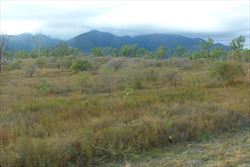
infestation (Photo: Sheldon Navie)
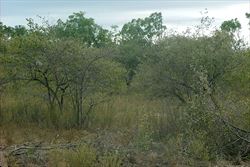
infestation (Photo: Sheldon Navie)
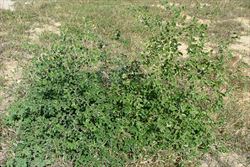
habit of a young tree (Photo: Sheldon Navie)
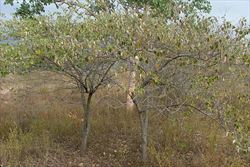
habit of mature tree (Photo: Sheldon Navie)
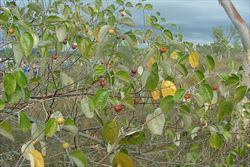
habit in fruit (Photo: Sheldon Navie)
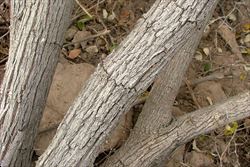
main trunk with furrowed bark (Photo: Sheldon Navie)
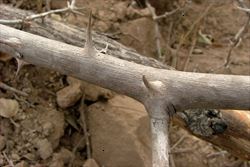
older stems with large spines (Photo: Sheldon Navie)
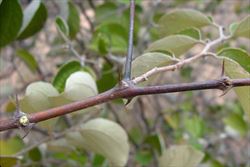
younger stems and thorns (Photo: Sheldon Navie)
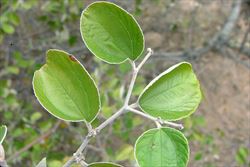
leaves (Photo: Sheldon Navie)
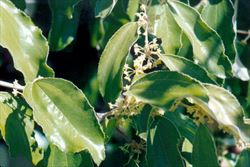
flower clusters (Photo: Land Protection, QDNRW)
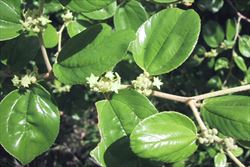
flowers (Photo: Chris Gardiner)
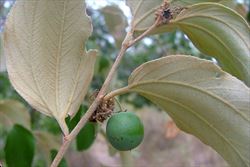
leaf undersides and immature fruit (Photo: Sheldon Navie)

fruit at various stages of maturity (Photo: Sheldon Navie)
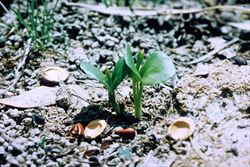
young seedlings (Photo: Chris Gardiner)
Scientific Name
Ziziphus mauritiana Lam.
Family
Rhamnaceae
Common Names
ber, chinee apple, Chinese date, cottony jujube, Indian cherry, Indian date, Indian jujube, Indian plum, jujube, sour jujube, Yunnan jujube, Yunnan spiny jujube
Origin
This species is thought to have originated in India, and is considered native to southern Asia, eastern Africa and many islands in the Indian Ocean.
Naturalised Distribution
Chinee apple (Ziziphus mauritiana ) is widespread in the northern parts of Australia, but is most common in the northern and central regions of Queensland. It is also scattered throughout the northern parts of the Northern Territory and northern Western Australia, and has been recorded from south-eastern Queensland.
It is also naturalised in southern Africa, south-eastern Aisa (i.e. Malaysia and the Philippines), tropical South America, Central America (e.g. Belize, Guatemala and Panama), southern USA (i.e. California and Florida), the Caribbean, the Cape Verde Islands, and on La Réunion and Fiji.
Habitat
A weed of pastures, grasslands, open woodlands, floodplains, inland watercourses, roadsides, disturbed sites and waste areas in semi-arid, tropical and sub-tropical regions.
Habit
A thorny and densely branched large shrub or small tree, with a spreading habit, growing 3-10 m tall and up to 10 m across.
Distinguishing Features
- a thorny and densely branched small tree.
- its young stems have a zig-zagging nature and usually bear a single curved thorn at each joint.
- its leaves have dark green and glossy upper surfaces and whitish or rusty-hairy undersides.
- its inconspicuous flowers are greenish-yellow or whitish in colour and borne in small clusters in the leaf forks.
- its rounded fruit (15-30 mm across) consist of a large hard stone surrounded by white fleshy pulp.
- these fruit turn from green to pale yellow, orange or reddish-brown as they mature.
Stems and Leaves
The young stems have a zig-zagging nature, are finely hairy (i.e. pubescent or tomentose) and are greenish or whitish in colour. They usually bear a single curved thorn (5-20 mm long) and a leaf at each joint. Older stems have a dark grey to blackish coloured bark that is rough and somewhat furrowed.
The alternately arranged leaves are borne on stalks (i.e. petioles) 2-16 mm long. These leaves are relatively small (20-80 mm long and 8-50 mm wide) and somewhat oval (i.e. sub-elliptic) in shape or egg-shaped in outline (i.e. ovate). Their upper surfaces are dark green in colour, hairless (i.e. glabrous) and glossy, while their lower surfaces are covered with whitish or rusty coloured hairs (i.e. they are tomentose). These leaves have three conspicuous main veins and finely toothed (i.e. serrulate) or almost entire margins.
Flowers and Fruit
The inconspicuous flowers (5-8 mm across) are greenish, greenish-yellow or whitish in colour. They may either have male and female parts (i.e. bisexual flowers) or only male parts (i.e. staminate flowers). These flowers are usually arranged in small loose clusters in the leaf forks (i.e. axils), with each cluster usually containing 10-15 flowers. The individual flowers are borne on short hairy stalks (i.e. tomentose pedicels) up to 4 mm long and consist of five hairy sepals (1.2-1.5 mm long) that are fused at the base (i.e. into a five-toothed calyx tube), five membranous petals (about 1.2 mm long), five stamens, and the bisexual flowers also have an ovary with two or three styles. Flowering mostly occurs from late summer through to early winter.
The fruit consists of a large hard stone surrounded by a white fleshy pulp and a surface skin (i.e. it is a drupe). These fruit (15-50 mm across) are rounded (i.e. sub-globular) or egg-shaped (i.e. ovoid) and turn from green to pale yellow, orange, red or reddish-brown in colour as they mature. The hard stone contains two rounded (i.e. sub-globular) or oval shaped (i.e. ellipsoid) seeds (6-8 mm long) that have a hard outer skin.
Reproduction and Dispersal
This species reproduces entirely by seed.
These seeds are most commonly dispersed by large birds and other animals (e.g. livestock, feral pigs and native animals) that eat the fruit.
Environmental Impact
Chinee apple (Ziziphus mauritiana) is regarded as an environmental weed in Queensland and the Northern Territory. It is actively managed by community groups in Queensland and was recently listed as a priority environmental weed in five Natural Resource Management regions.
Legislation
This species is declared under legislation in the following states and territories:
- Northern Territory: A - to be eradicated (outside of the Darwin, Palmerston, Litchfield and Alice Springs local authority areas), and C - not to be introduced into the Territory.
- Queensland: Class 2 - landowners must take all reasonable steps to keep land free of this species (throughout the entire state). It is also illegal to sell a declared plant or its seed in this state.
- Western Australia: P1 - the movement of this species or its seeds is prohibited (throughout the entire state), and P5 - infestations of the weed on public lands must be controlled (in the Broome, Derby-West Kimberley, Halls Creek and Wyndham-East Kimberley local authority areas).
Management
For information on the management of this species see the following resources:
- the Biosecurity Queensland Fact Sheet on this species, which is available online at http://www.dpi.qld.gov.au.
- the Northern Territory Department of Natural Resources, Environment and The Arts Agnote on this species, which is available online at http://www.nt.gov.au/weeds.
Similar Species
Chinee apple (Ziziphus mauritiana) is similar to two closely related native species (i.e. Ziziphus oenopolia and Ziziphus quadrilocularis) and strychnine tree (Strychnos lucida). These species can be distinguished by the following differences:
- Chinee apple (Ziziphus mauritiana ) is a large shrub or small tree (growing up to 10 m tall) with alternately arranged leaves. Its leaves have green upper surfaces and whitish or rusty lower surfaces and its relatively large fruit (20-50 mm across) turn yellowish, orange or reddish-brown in colour when ripe.
- Ziziphus oenopolia is a straggly shrub (growing up to 3 m tall) with alternately arranged leaves. Its leaves are green on both surfaces and its relatively small fruit (about 10 mm across) turn black when ripe.
- Ziziphus quadrilocularis is a large shrub or small tree (growing up to 10 m tall) with alternately arranged leaves. Its leaves have green upper surfaces and whitish or rusty lower surfaces and its relatively small fruit (10-18 mm across) turn reddish, purplish or black in colour when ripe.
- strychnine tree (Strychnos lucida) is a small tree with oppositely arranged leaves. Its fruit turn bright orange when ripe and, unlike these other species, they are hard-shelled berries containing several flattened seeds in a soft white pulp.

